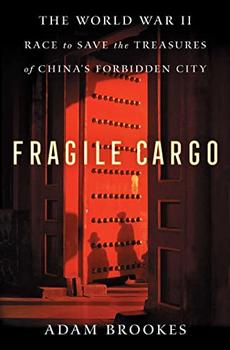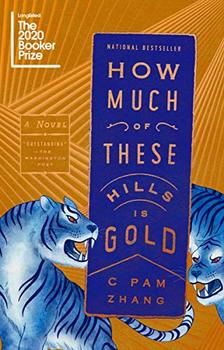Summary | Excerpt | Reading Guide | Reviews | Beyond the book | Read-Alikes | Genres & Themes | Author Bio

"Mirror, Mirror on the wall
I am my mother after all!"
In my pre-retirement days as a professor of women's studies, I made this the official mantra of a class I periodically taught called "Mothers and Daughters." Honesty compels me to admit that I did not think this up myself. I borrowed it from a poster or a T-shirt I came across in a catalog somewhere. And how true this saying is! For better or worse, the mother-daughter relationship is pivotal in a woman's life, and often when we least expect it, we find ourselves saying or doing something learned from our mothers that we swore we never would.
It is a theme that resonates not only through our life experiences, but in many a contemporary novel, including the work of Amy Tan. The mother-daughter relationship is a primary theme in the now classic The Joy Luck Club and continues through the majority of her subsequent books. The Valley of Amazement, Tan's first book in eight years, revisits this topic – albeit with a twist. Most of her earlier novels, including The Joy Luck Club, feature a contemporary setting with a traditional Chinese mother and a thoroughly Americanized daughter. However Tan's latest sweeps us from San Francisco to the glittering world of Shanghai over many decades starting with the late nineteenth century to the mid-twentieth.
Through a strange set of twists and turns, a white American woman Lulu Mintern, has become the madam of Hidden Jade Path, the finest courtesan house in Shanghai. Here she is raising her half-Chinese daughter Violet with the help and support of Violet's friend and mentor, Magic Gourd, herself a former courtesan. Narrated in turn by all three women, The Valley of Amazement is a multi-generational tale of love, betrayal, abandonment and redemption. And while the mother-daughter theme is first and foremost, the novel also deals with other life issues.
For example, there is the constant tap dance between men and women, framed not merely sexually, but emotionally as well. Much of the humor that comes through all the pain centers on the question of who is really in control in this extremely patriarchal culture (hint: It isn't the men). "Men are romantic," Magic Gourd tells Violet as she tutors her in the ways of a successful courtesan, "to give him confidence, you must always refer to his stem as the Warrior or the Dragon Head. Men are very easily pleased by these words…He will feel more powerful, more virile, and in a conquering, generous mood, the more so if he has drunk plenty of wine..."
Race is also dealt with, casting light on the inbred prejudices of both the white western world and the wealthy Chinese players in international business and politics. Violet, caught in the middle of this intolerance, spends much of her life denying the Chinese half of herself as she seeks to define who she really is.
"The older I became, "Violet confesses, "the more this...[Chinese]...side of me would show, and I feared that over time I would no longer be treated like an American, but as no better than other Chinese girls. And thus I sought to rid myself of whatever might suggest I was a half-breed...where would I belong? What would I be allowed to do? Would anyone love a half-hated girl?" A hard question, we must admit, yet in a final irony of her life, Violet will only find peace when her two halves meld to form the whole of her being.
This is a novel of power, of enticement, and society's hypocritical attitudes about sex and the industry it spawns. But the mother-daughter relationship – the very essence, for better or for worse of the female experience, is what remains the true heart and soul as we follow the twining paths of Lulu, Violet, Magic Gourd (a mother figure throughout the novel), and finally Violet's daughter, Flora, who ultimately proves to be the bridge between the generations.
Written in flowing prose that sweeps the reader down an adventurous path from late nineteenth century America to the cusp of World War II in China, this is a portrayal of strong women you will not soon forget. The Valley of Amazement is well worth the long wait.
![]() This review was originally published in The BookBrowse Review in November 2013, and has been updated for the
July 2014 edition.
Click here to go to this issue.
This review was originally published in The BookBrowse Review in November 2013, and has been updated for the
July 2014 edition.
Click here to go to this issue.

If you liked The Valley of Amazement, try these:

by Adam Brookes
Published 2023
The gripping true story of the bold and determined museum curators who saved the priceless treasures of China's Forbidden City in the years leading up to World War II and beyond.

How Much of These Hills Is Gold
by C Pam Zhang
Published 2021
An electric debut novel set against the twilight of the American gold rush, two siblings are on the run in an unforgiving landscape - trying not just to survive but to find a home.
We should have a great fewer disputes in the world if words were taken for what they are
Click Here to find out who said this, as well as discovering other famous literary quotes!
Your guide toexceptional books
BookBrowse seeks out and recommends the best in contemporary fiction and nonfiction—books that not only engage and entertain but also deepen our understanding of ourselves and the world around us.